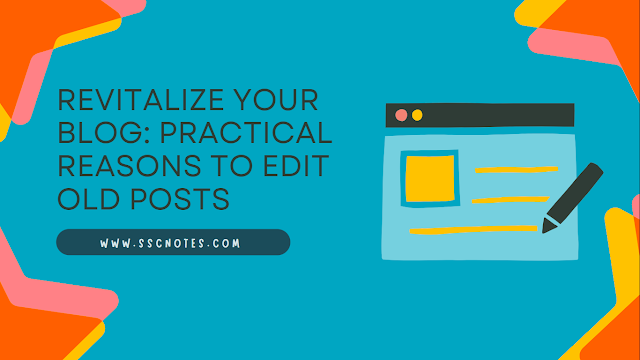Revitalize Your Blog: Practical Reasons to Edit Old Posts
Revitalize Your Blog: Practical Reasons to Edit Old Posts
In the ever-evolving landscape of blogging, the importance of regularly updating and optimizing your content cannot be overstated. While the allure of crafting new posts is strong, revisiting and editing old posts holds a treasure trove of benefits. In this article, we'll delve into the reasons why you should consider editing your old blog posts, along with practical tips to make the process seamless and rewarding.
1. Improved Relevance
Over time, the relevance of your old blog posts may diminish as trends shift and information evolves. By updating your content, you can ensure that your posts remain current, providing accurate and valuable information to your readers.
2. Enhanced SEO Performance
Editing old posts presents an opportunity to fine-tune your search engine optimization (SEO) efforts. Revise keywords, meta descriptions, and headings to align with current best practices, potentially boosting your posts' visibility in search results.
3. Showcase Your Growth
Your writing style and expertise may have evolved since you first wrote those older posts. Editing allows you to reflect your growth and present your content in a way that resonates with your current skills and knowledge.
4. Fix Errors and Broken Links
Older posts might contain outdated information, broken links, or grammatical errors that can negatively impact your blog's credibility. Regular editing helps you correct these issues and maintain a professional image.
5. Increased User Engagement
Upgrading your older posts can enhance user engagement. Add multimedia elements like images, videos, or infographics to make your content more visually appealing and easier to understand.
6. Reignite Social Sharing
Revamped content provides an excellent opportunity to reintroduce your posts to your audience. Share the updated versions on your social media platforms to garner renewed interest and potentially attract new readers.
7. Optimize for New Platforms
If your blog is now available on different platforms or mediums, editing old posts can help you adapt the content to fit these new formats. This versatility expands your reach and caters to different audience preferences.
Practical Tips for Editing Old Posts
Perform Content Audits: Regularly review your blog archives to identify which posts need updating. Prioritize those that are still relevant but may benefit from enhancement.
Check for Accuracy: Verify the accuracy of facts, figures, and information in your old posts. Update them with the latest data to maintain credibility.
Update Visuals: Replace outdated images with high-quality visuals that align with your current brand aesthetic.
Update Links: Ensure that all internal and external links are functional and direct readers to relevant sources. Replace broken or irrelevant links.
Enhance Formatting: Revise the formatting of older posts to match your current style. Use headings, bullet points, and subheadings to improve readability.
Optimize SEO Elements: Update keywords, meta descriptions, and title tags to align with current SEO practices.
Add Value: Incorporate new insights, tips, or examples to make your content more valuable to readers.
Monitor Performance: Keep an eye on how your edited posts perform after the updates. Analyze metrics to understand the impact of your changes on traffic and engagement.
Final Thoughts
Editing old blog posts is an investment that can yield substantial returns. By breathing new life into your existing content, you can bolster your blog's relevance, SEO performance, and user engagement. Follow these practical tips to make the editing process effective and rewarding, ultimately revitalizing your blog and reinforcing your authority in your chosen niche.
Blogging:
 Reviewed by SSC NOTES
on
August 21, 2023
Rating:
Reviewed by SSC NOTES
on
August 21, 2023
Rating:
